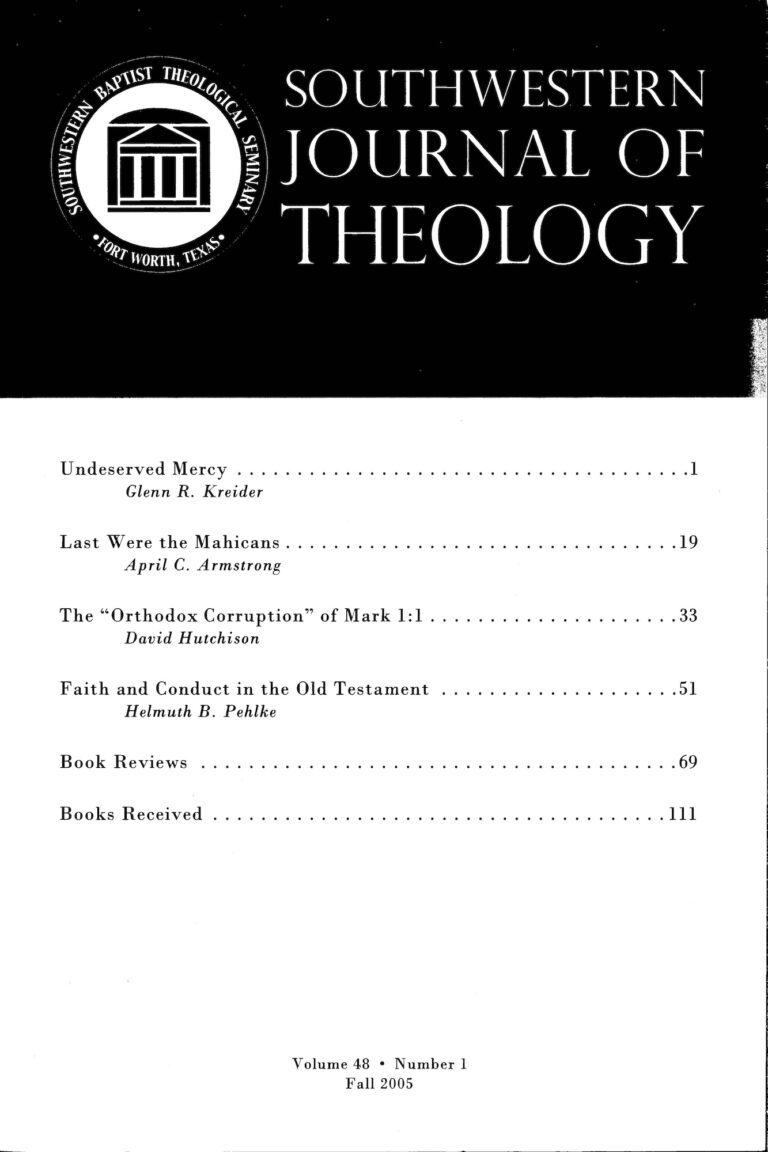
Southwestern Journal of Theology (48.1)
Southwestern Journal of Theology
Volume 48, No. 1 - Fall 2005
Editor: Paige Patterson
Pastoral Care and Counseling with Latino/as. By R. Esteban Mondila and Ferney Medina. Minneapolis: Augsburg Fortress, 2006. 146 pages. Softcover, $ 16.00.
As the Latino/a population in the U.S. grows faster than the projected estimates, the need for effective ways to minister to people of Latino/ Hispanic heritage becomes increasingly urgent. Therefore, Pastoral Care and Counseling with Latino/as is a timely and relevant book. Montilla and Medina use the terms Latino/a and Hispanic interchangeably throughout the book. However, they have preferred the use of Latino/a as evidenced by the title of the book. The authors are well qualified to write this book due to their educational, professional, and ministerial training, which includes pastoral experience, board certification in chaplaincy, and pastoral counseling. Additionally, their Latino/a heritage gives them a unique experiential vantage point to address the issues presented in the book.
Montilla and Medina strongly and correctly emphasize that “the Latino/a population is a polyculture combining a heterogeneous and multicolored group of people” (6) that include a variety of ethnicities and backgrounds. They provide an overview of the Latino/a culture and emphasize the collectivistic aspect of this group of people and the importance of community and family relationships. They further recognize that as a diverse group, Latino/a people have diverse expressions of spirituality including Roman Catholicism, evangelicalism, and religious syncretism. Therefore, they contend that when attempting to minister to such a diverse population, counselors need to have “humility” and to be “culturally sensitive” (18).
The book discusses characteristics of pastoral counselors and presents “a biblical model of pastoral care and counseling” based on an understanding of Isador Baumgartner’s pastoral counseling model from Jesus’ encounter with the disciples on the road to Emmaus. The authors encourage readers to minister to Latino/as from an ecological perspective, thus considering life in the context of the community. Additionally, they deal with the issue of suffering by using both biblical examples (i.e., Job) and case studies.
Chapter 8, “A Latino/a View of Human Sexuality” and chapter 9, “Caring for the Family,” are very practical and insightful, particularly to those not familiar with the unique family dynamics of the Latino/a culture. The authors did an excellent job in describing the idiosyncrasies and elements of the culture. These chapters will assist readers not only to better understand interactions among Latino/a couples and families but also to better relate to them as counselors.
Montilla and Medina boldly address the issue of race relations in America and how Latino/as are affected negatively as a minority group. Some of the authors’ theological interpretations at times may resemble liberation theology. For instance, they state “our faith is about restoring those who have been historically marginalized” (58) and propose the use of education as “a liberating act” (75). Nevertheless, readers will gain a deeper perspective that comes from within the Latino/a community. Moreover, they describe Latino/as as “outcast and marginalized” (49). They use the parable of the good Samaritan to draw some similarities between the Samaritan and Latino/as. They contend that the Samaritan was “himself a marginalized person who had experienced the pain of discrimination and racism. He understood what it meant to be oppressed and exploited” (69). Therefore, in chapter 10, as they provide “pastoral strategies for issues of discrimination and racism,” the authors contend that Latino/as could benefit from the use of “a healthy cultural paranoia” (127), which is “a state of alertness” (127) as they live and interact with the dominant cultural group in America.
Overall, this book will prove to be a valuable resource for those involved in providing care and counseling to Latino/as. Readers will acquire a broader understanding of the Latino/a culture and practical considerations when working with them. Due to the brevity of the book, 146 pages, and the number of topics addressed by the authors, some issues were only addressed superficially; nonetheless, readers can look at the book’s extensive bibliography (133-45) for further reading and research.





